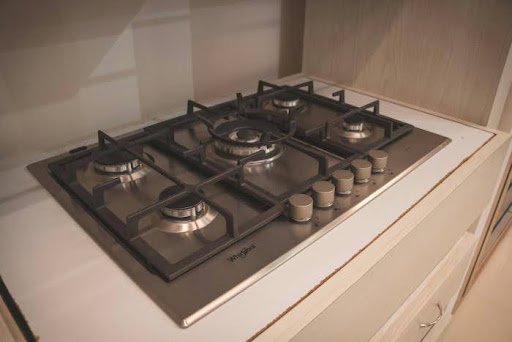Burn marks on a cooktop can make it look dirty even after cleaning it and can be difficult to get rid of using only soap and water. The good news is that such severe marks can still be removed using some elbow grease and a more intense cleaning method.
Understanding stovetop burn marks: Causes and challenges
Before diving into cleaning techniques for burn marks, it’s essential to understand why they occur. Stovetop burn marks happen when food, grease, or other debris is heated excessively, leaving behind tough, blackened, or brownish spots. The types of stovetops–gas, electric coil, or glass-ceramic–also influence how burn stains form and how easily they can be removed.
How to clean the burnt residue
1.Baking soda scrubbing
Start with baking soda. This natural scrubbing powder is also mildly base, like a soap. The base baking soda breaks down acids, which helps to scrub away food residue. At the same time, the sharp soda particles make an excellent scrubbing powder to simply scrape away your burnt-on food. Often, just soap, water, a sponge, and some baking soda sprinkled heavily over the surface is enough to break the burnt-on food off of the stovetop glass or enamel.
2.Baking soda setting
Another option is to let the baking soda soak into the top of your of your stove surface. Mix baking soda in with a mild cleaning liquid like hot water, vinegar, or lemon juice. Add enough baking soda until the mixture makes a paste. Now spread the baking soda paste over the entire surface of your stovetop or over the worst burnt-on areas. Let the baking soda paste sit for 15 to 20 minutes while it dissolves, then use it as a scrubbing paste to remove and wipe the stove clean.
3.Borax scrubbing powder
Another option for scrubbing powder is borax – a natural salt that is also a non-toxic cleaning product. Like baking soda, the crystal particles of borax are extremely sharp on a microscopic level which makes it a great supply for scrubbing really stubborn baked-on grime. Borax is a common kitchen cleaning product and is often used in homemade soaps. Alone, borax empowers soap – helping it to suds and create the crud-dissolving chemical process, while also scraping away at the crud without damaging enamel or glass.
4.Plastic spatula or putty knife
Another method is simply to flip the baked-on crud off of the stove surface. This works because the crud is more cohesive to itself than it is to the smooth surface of your stove. Using a spatula (flipper) or a surface-safe putty knife, you can push against the base of the baked-on stove crud until each small pile comes loose from the surface.
This doesn’t work with all crud and sometimes works best when you have dissolved the surface but the crud mounds still remain solid.
Tips to avoid burning your stove top
Preventing burns on your stove top is just as important as knowing how to clean them. Here are some tips to help you avoid a burn from stove top appliances:
- Use the right size pots and pans: One of the leading causes of a burn from stove top appliances is using pots and pans that are too large or too small for the burner. Make sure to use cookware that fits the size of your burner.
- Watch your cooking: It’s easy to get distracted while cooking, but leaving your stove unattended is a surefire way to end up with burn marks. Try to stay in the kitchen while you’re cooking, especially if you’re cooking at high temperatures.
- Clean regularly: The longer a burn mark sits, the harder it is to remove. Make cleaning your stove top a regular part of your kitchen maintenance to prevent burns from becoming a permanent fixture.

Leave a Reply